Case of monkeypox: update on October 11, 2022
Update on October 11, 2022 following the cases of monkey pox ( Monkeypox in English) reported in France and around the world. The next update of this report will take place on October 18.
Posted on October 12, 2022
...
Update in France
As of 11 October 2022 at 12:00 p.m., 4,064 confirmed cases of infection with the Monkeypox virus have been identified in France, i.e. 21 additional cases since the assessment of 04 October.
The distribution of confirmed cases by region of residence (or by reporting region when the region of residence is unknown) is presented in Figure 1. The Ile-de-France region concentrates the largest number of cases (2,482, i.e. 61, 0%), followed by Occitania (312 cases), Provence-Alpes-Côte d'Azur (275 cases) and Auvergne-Rhône-Alpes (267 cases); 21 cases reside abroad.
The vast majority of confirmed adult cases identified to date are male and 102 cases over the age of 15 (2.5%) are female. The proportion of female cases increased until W36 when it reached 13.6% then decreased until W39 (with 7.5% of confirmed cases). In S40, the data are not consolidated and only 3 cases in women were declared for 14 cases in men.
Ten (0.25%) children under the age of 15 were reported as confirmed cases. Confirmed adult cases have a median age of 36; 25% of adult cases are under 29 years old and 25% are 43 to 81 years old.
Of the confirmed cases for which information is available, 91 (2.2%) were hospitalized due to infection with Monkeypox virus; this proportion remains stable over time.
No deaths have been reported to date.
The distribution of cases by symptom onset date (when known) is shown in Figure 2. The case symptom onset date ranges from May 7 to October 10, 2022. of declaration, the data of the last weeks are not consolidated. The reports received do not always mention the date of onset of the symptoms. As an alternative to this information, the distribution of cases according to their date of reporting is presented in Figure 3.
These updated data show that the peak of contamination took place at the end of June/beginning of July and that the number of confirmed cases has since decreased. However, we must remain cautious because improving knowledge of the disease can reduce the need for treatment by the best-informed populations. Several other countries, particularly in Europe, are seeing similar trends in the number of new cases reported over the past 3 months.
As of 11 October 2022 at 12:00 p.m., 4,064 confirmed cases of infection with the Monkeypox virus have been identified in France, i.e. 21 additional cases since the assessment of 04 October.
The distribution of confirmed cases by region of residence (or by reporting region when the region of residence is unknown) is presented in Figure 1. The Ile-de-France region concentrates the largest number of cases (2,482, i.e. 61, 0%), followed by Occitania (312 cases), Provence-Alpes-Côte d'Azur (275 cases) and Auvergne-Rhône-Alpes (267 cases); 21 cases reside abroad.
The vast majority of confirmed adult cases identified to date are male and 102 cases over the age of 15 (2.5%) are female. The proportion of female cases increased until W36 when it reached 13.6% then decreased until W39 (with 7.5% of confirmed cases). In S40, the data are not consolidated and only 3 cases in women were declared for 14 cases in men.
Ten (0.25%) children under the age of 15 were reported as confirmed cases. Confirmed adult cases have a median age of 36; 25% of adult cases are under 29 years old and 25% are 43 to 81 years old.
Of the confirmed cases for which information is available, 91 (2.2%) were hospitalized due to infection with Monkeypox virus; this proportion remains stable over time.
No deaths have been reported to date.
The distribution of cases by symptom onset date (when known) is shown in Figure 2. The case symptom onset date ranges from May 7 to October 10, 2022. of declaration, the data of the last weeks are not consolidated. The reports received do not always mention the date of onset of the symptoms. As an alternative to this information, the distribution of cases according to their date of reporting is presented in Figure 3.
These updated data show that the peak of contamination took place at the end of June/beginning of July and that the number of confirmed cases has since decreased. However, we must remain cautious because improving knowledge of the disease can reduce the need for treatment by the best-informed populations. Several other countries, particularly in Europe, are seeing similar trends in the number of new cases reported over the past 3 months.
Figure 1. Laboratory-confirmed monkeypox cases (n=4,043 cases) by region of residence (or by reporting region when region of residence is unknown), France, May-October 2022 (data as of 10/11/2022 – 12:00 p.m.)
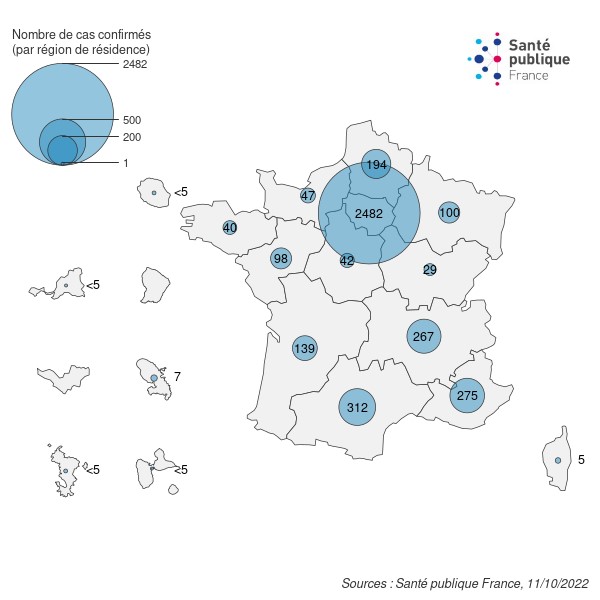
Figure 2. Biologically confirmed cases of monkeypox (n=2,989 cases, number of missing data: 1,075) by week of onset of symptoms, France, May-October 2022 (data as of 10/11/2022 – 12:00 p.m.).
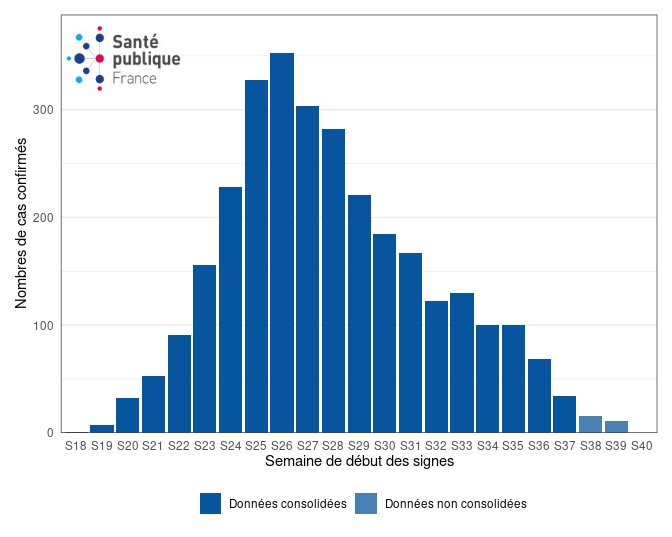
The data for the last few weeks (in light blue) are not fully consolidated.
Figure 3. Biologically confirmed cases of monkeypox (n= 4,064 cases) by reporting week, France, May-October 2022 (data as of 10/11/2022 – 12:00 p.m.).
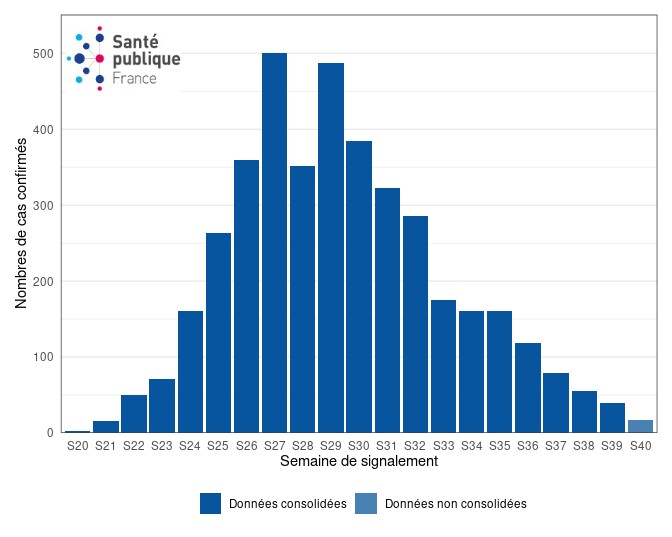
The data for the last week (in light blue) is not fully consolidated. The reporting low observed in week 28 (July 11 to 17) can be explained by the July 14 public holiday.
...
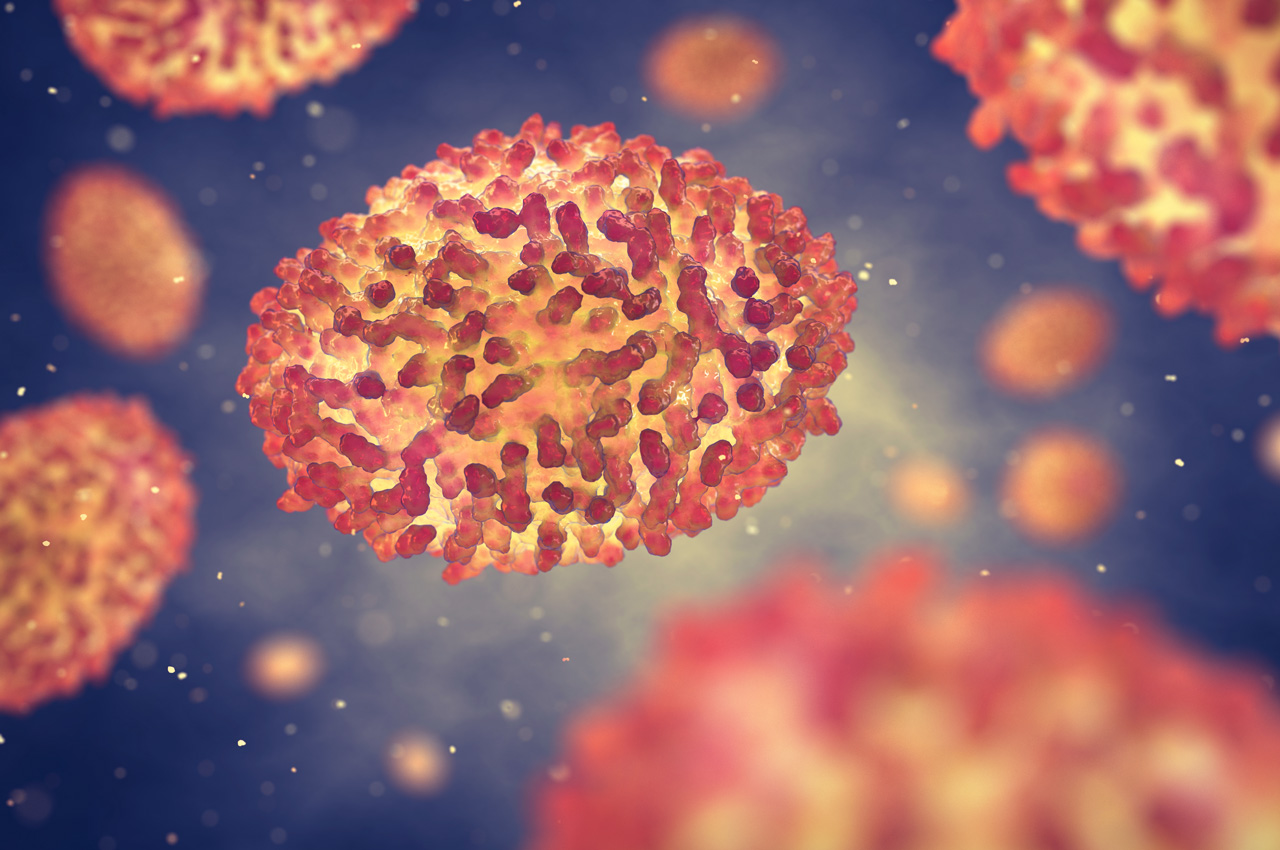
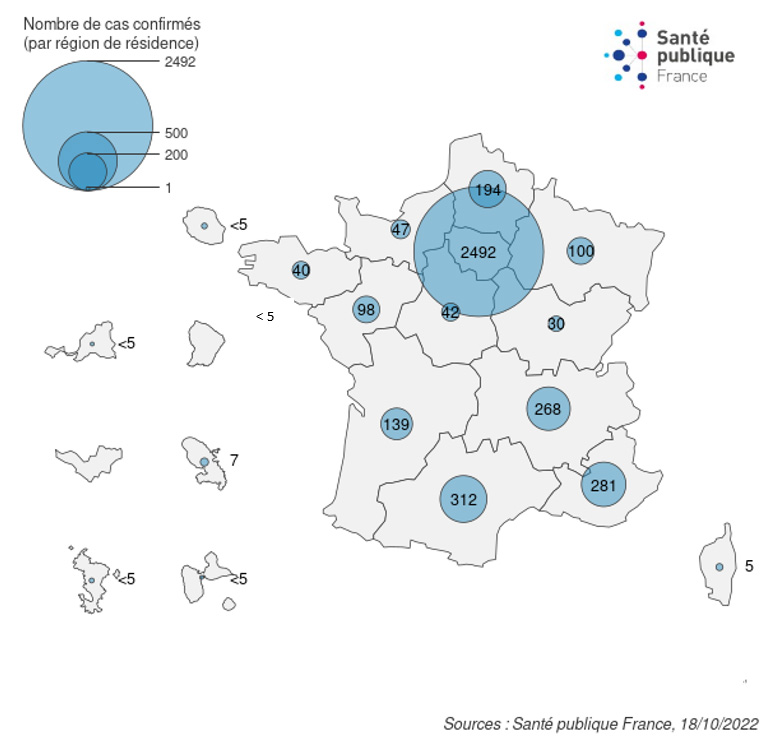
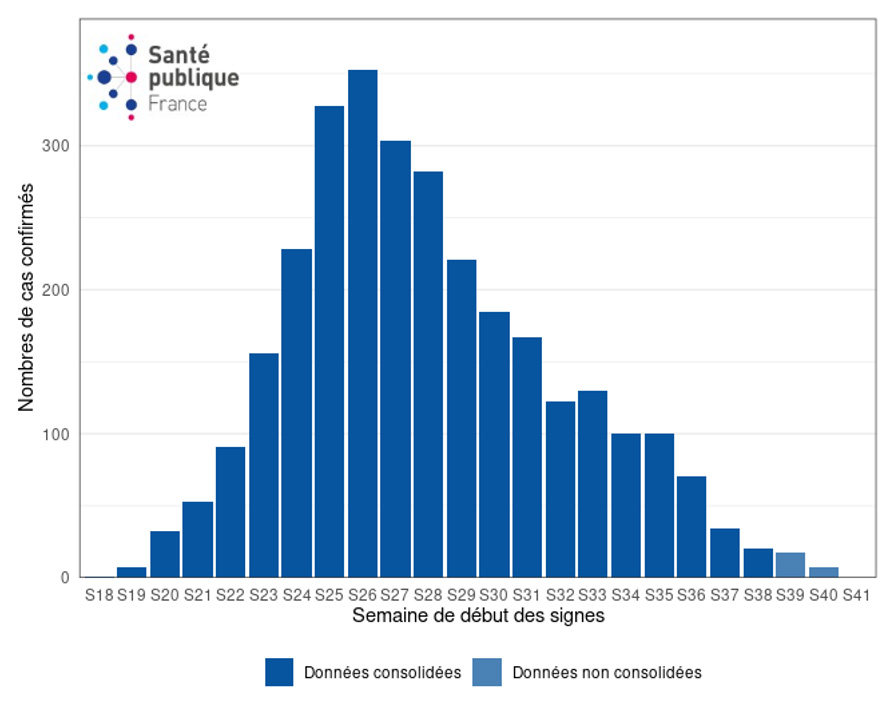
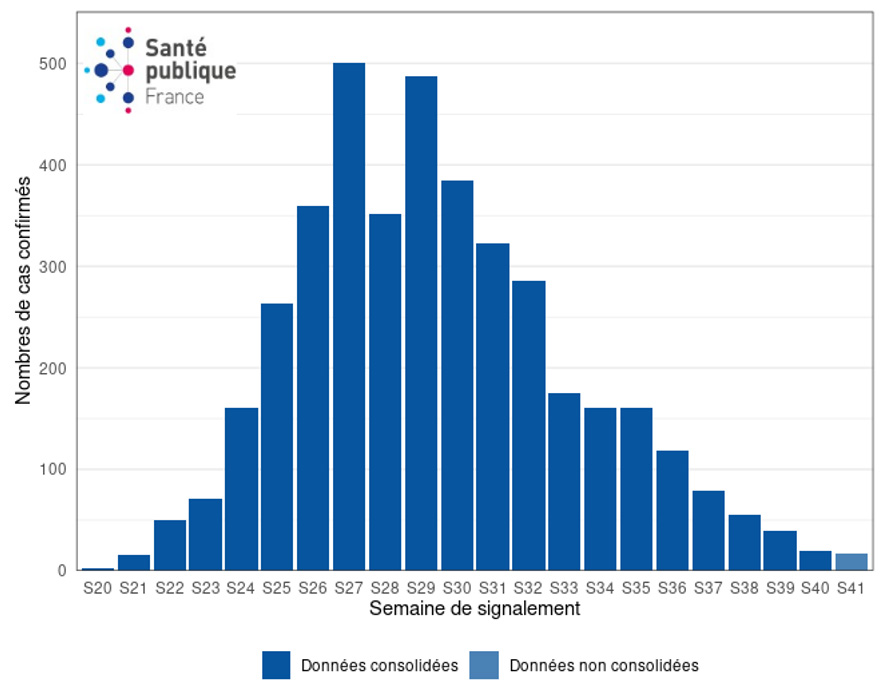
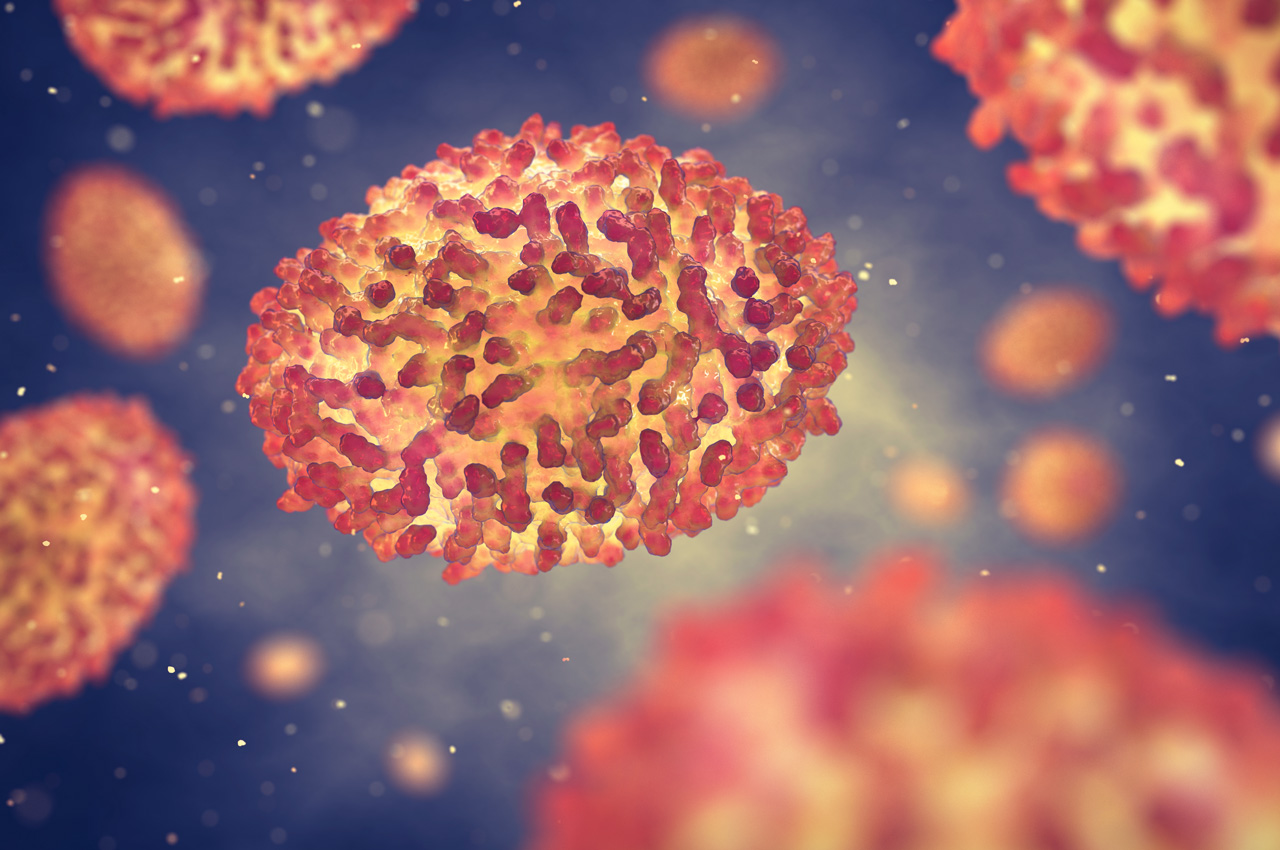
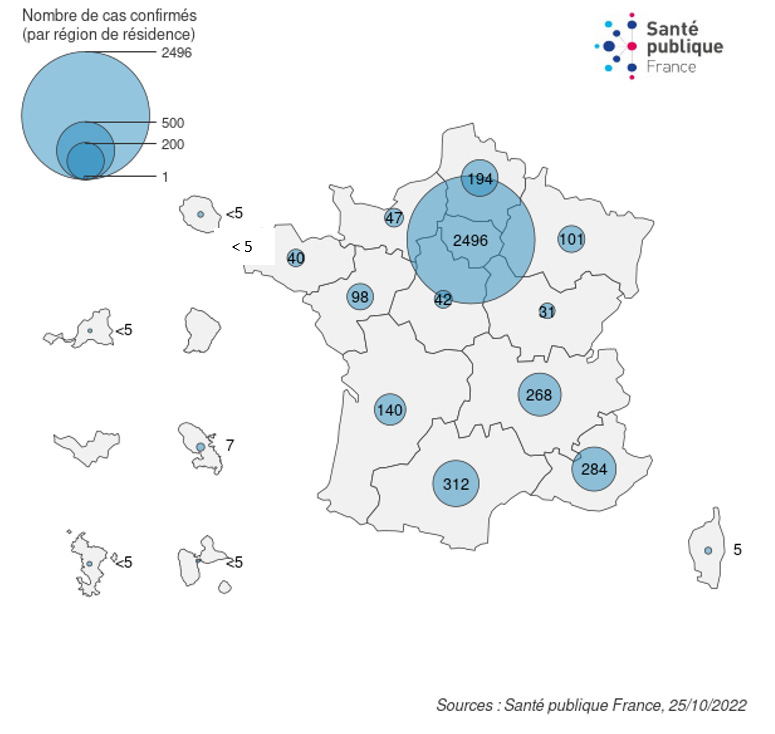
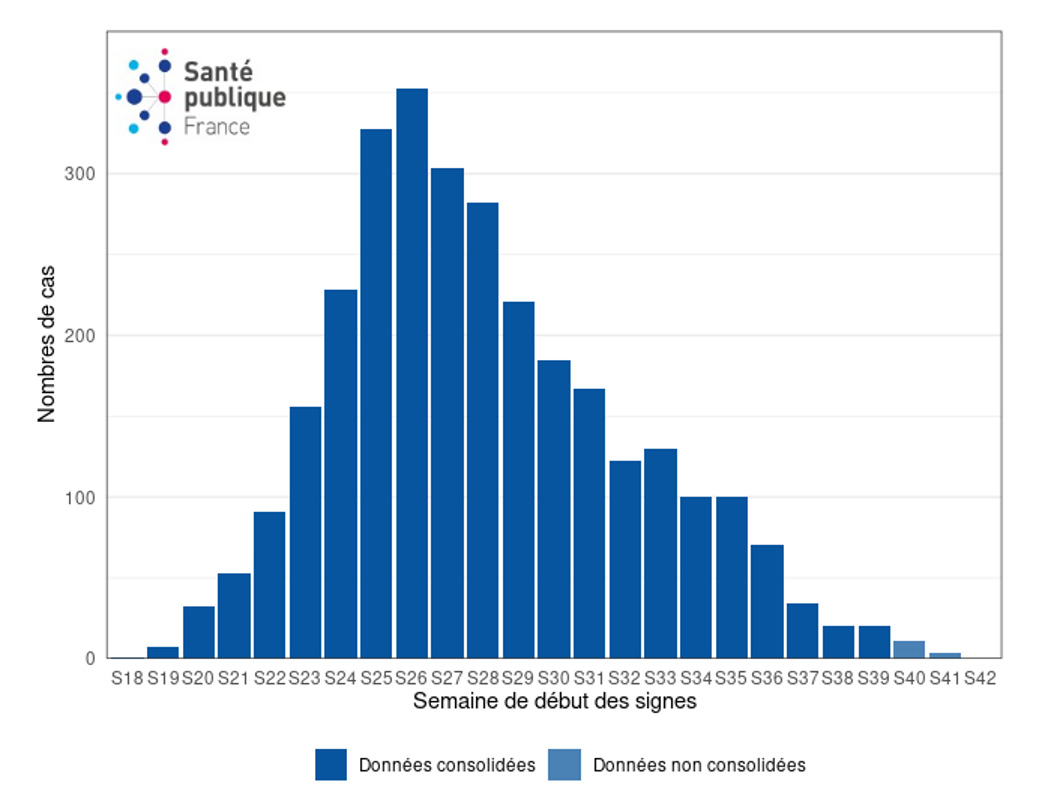
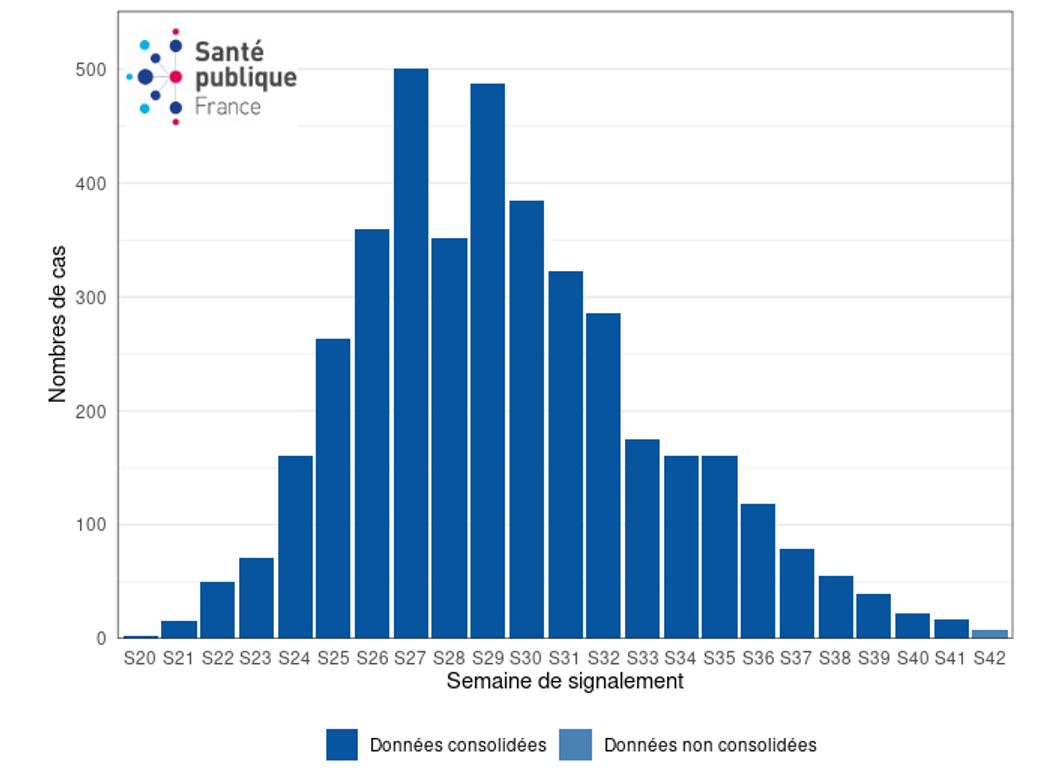
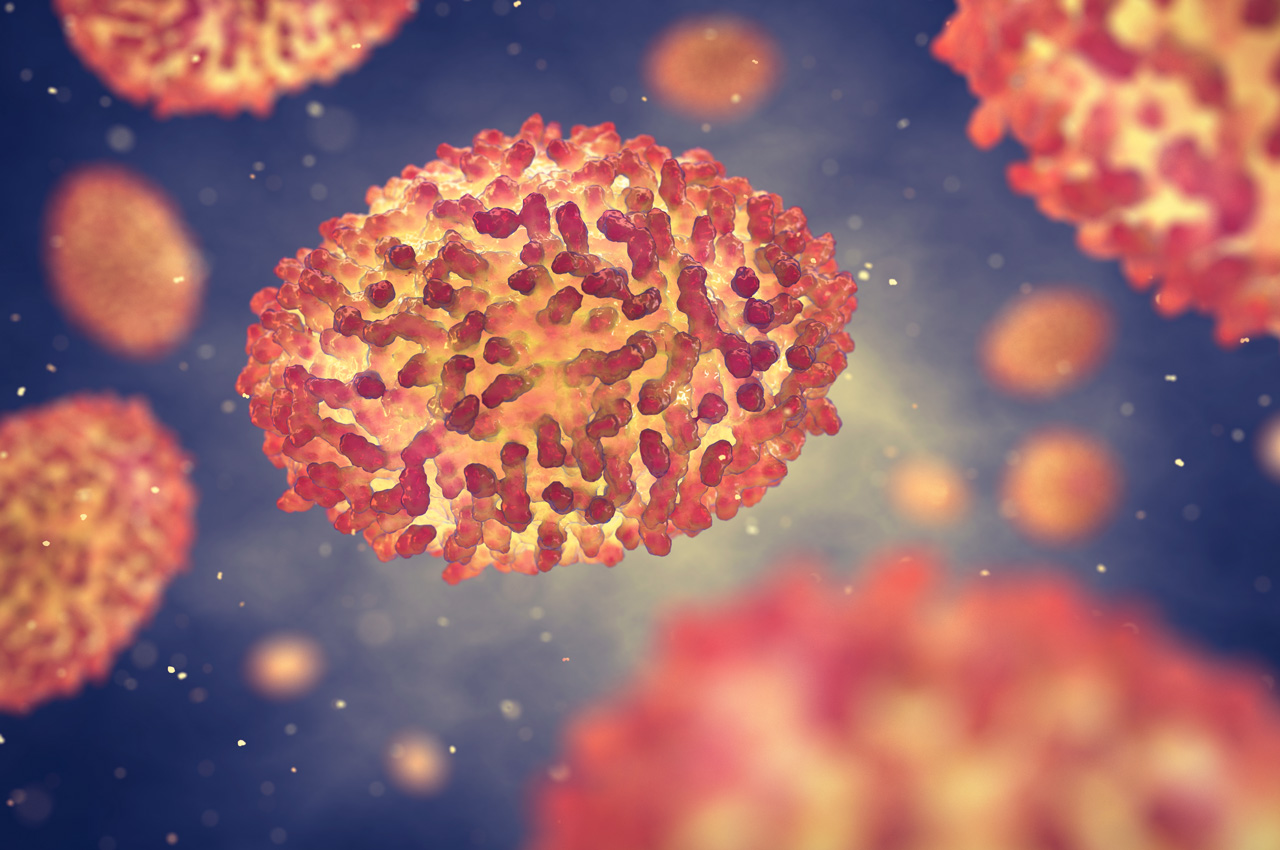
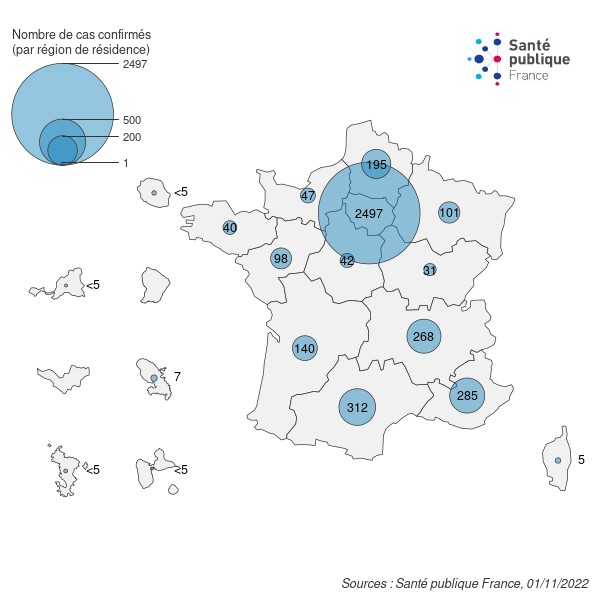
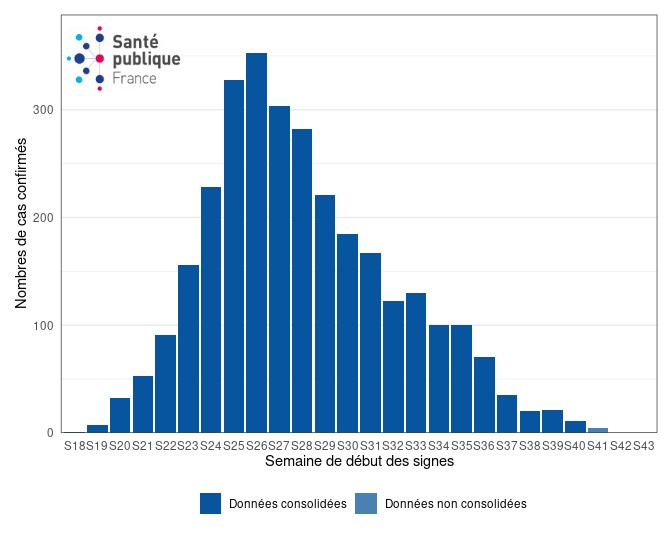
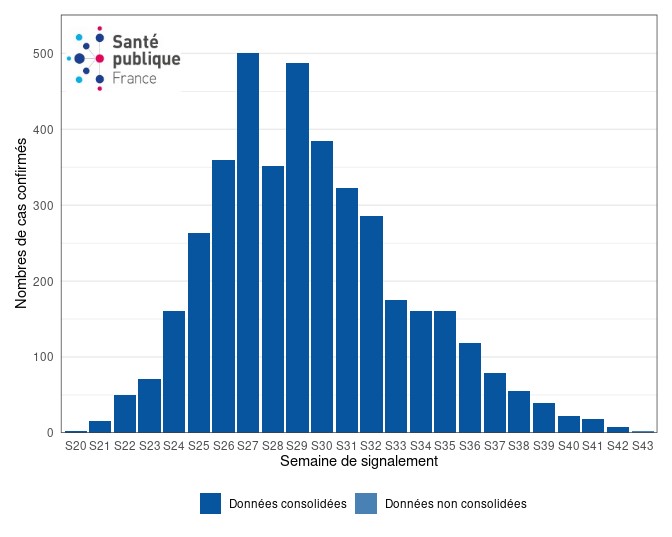
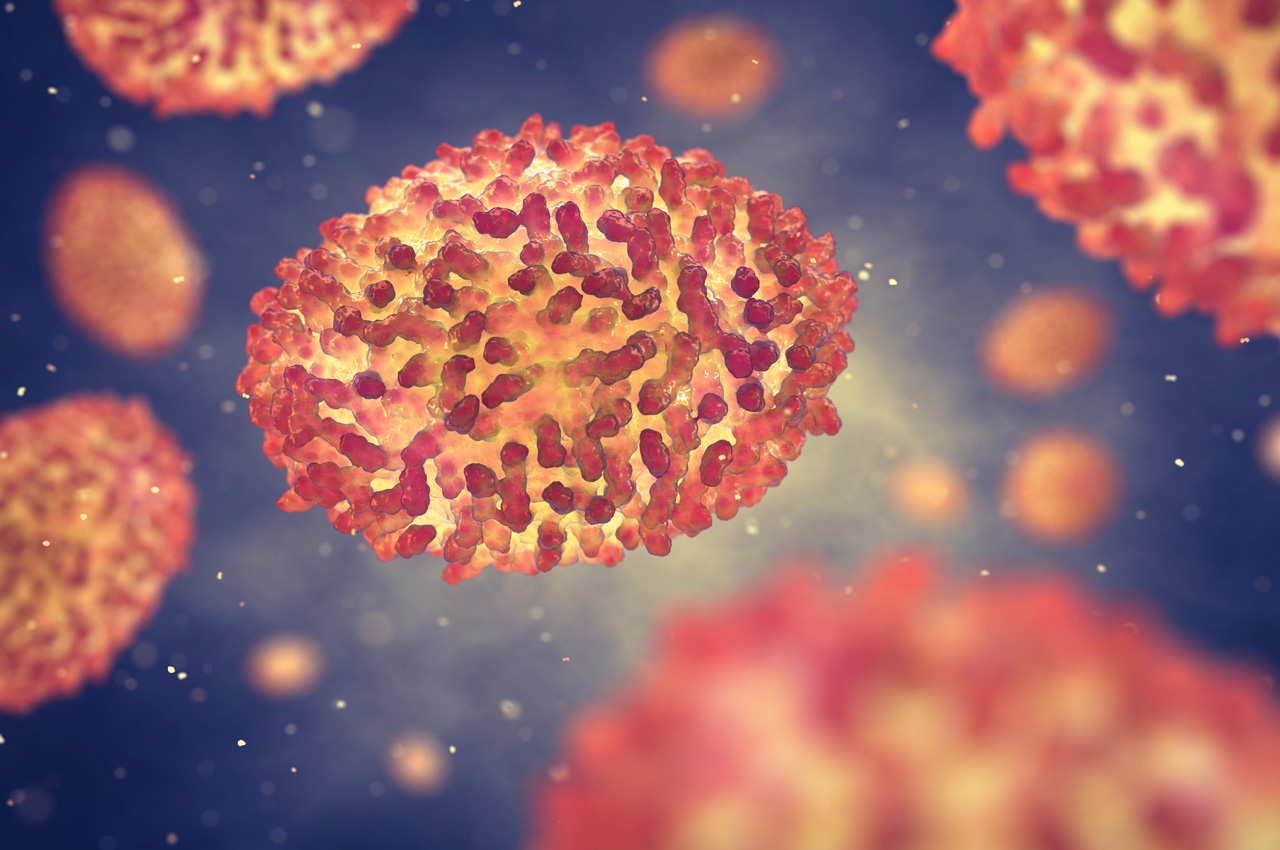
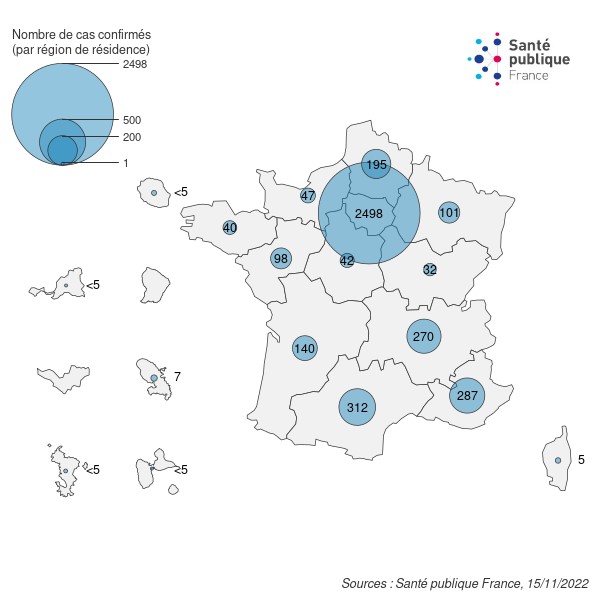
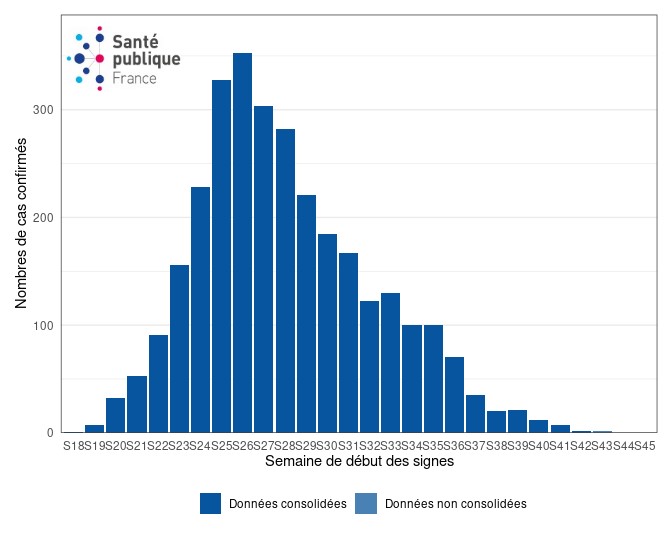
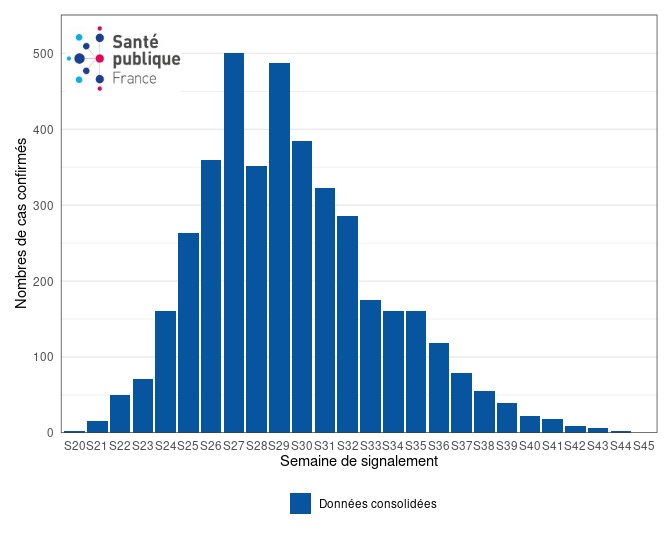
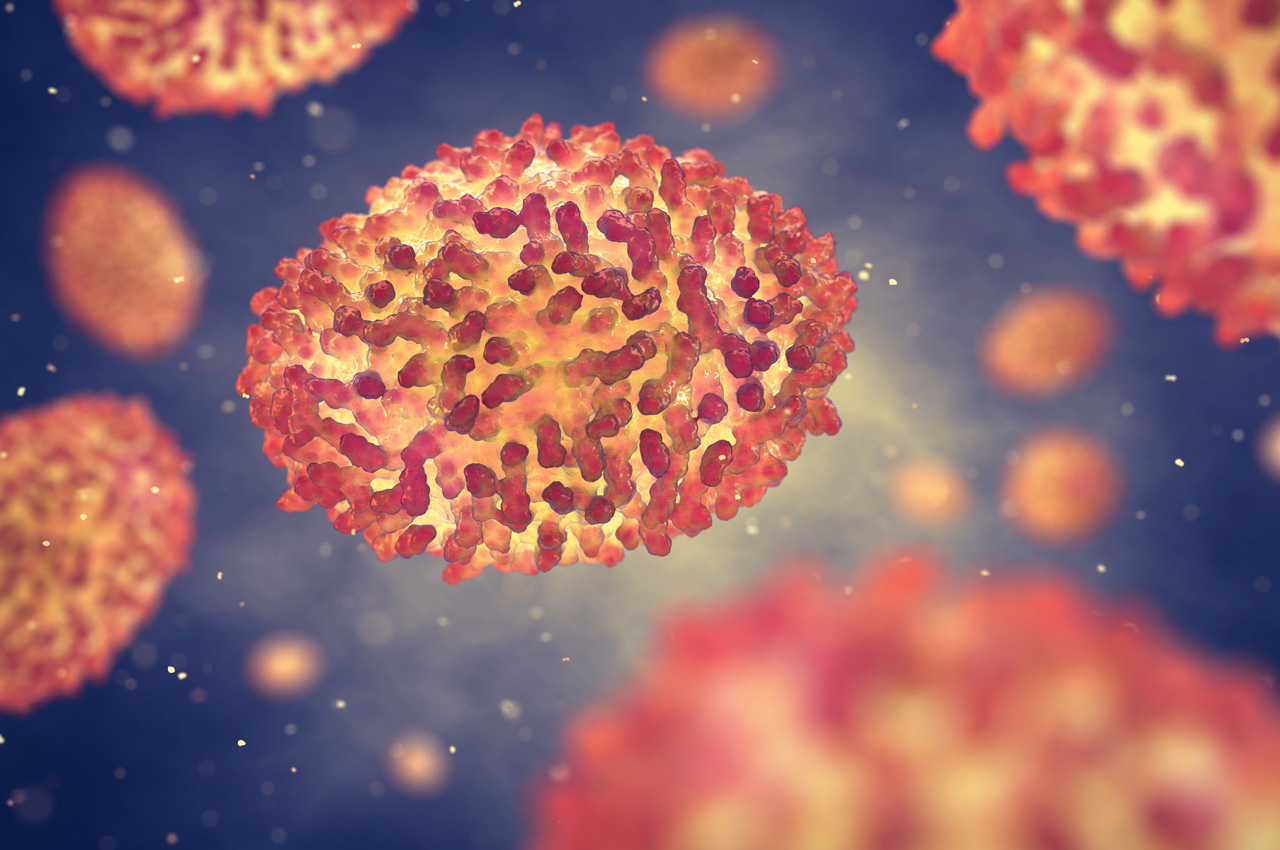
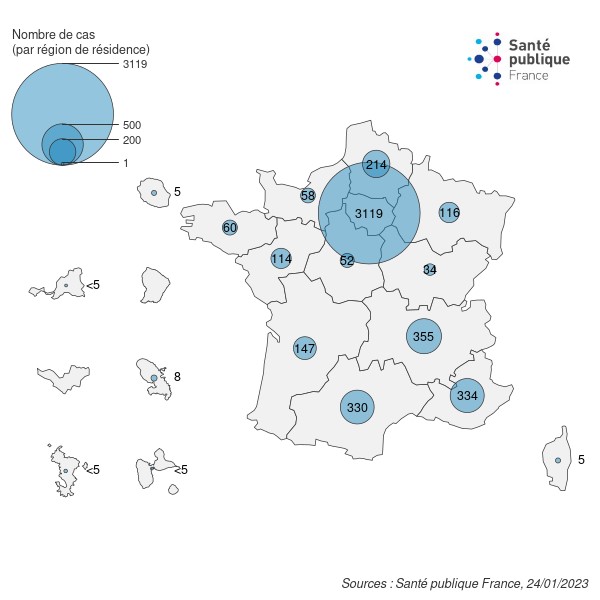
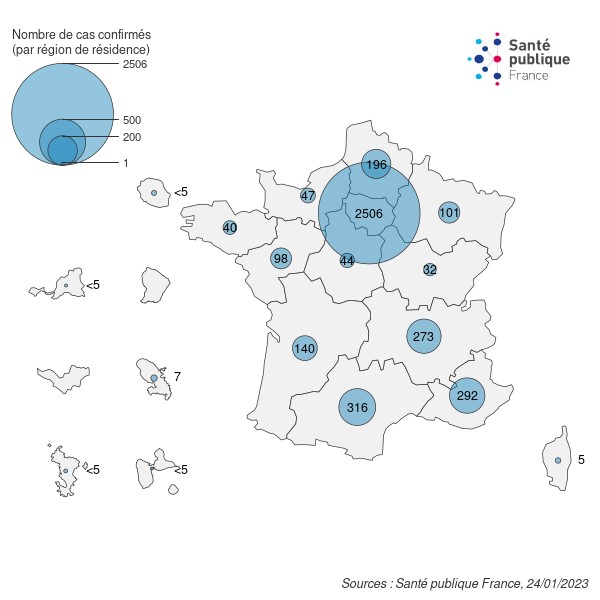
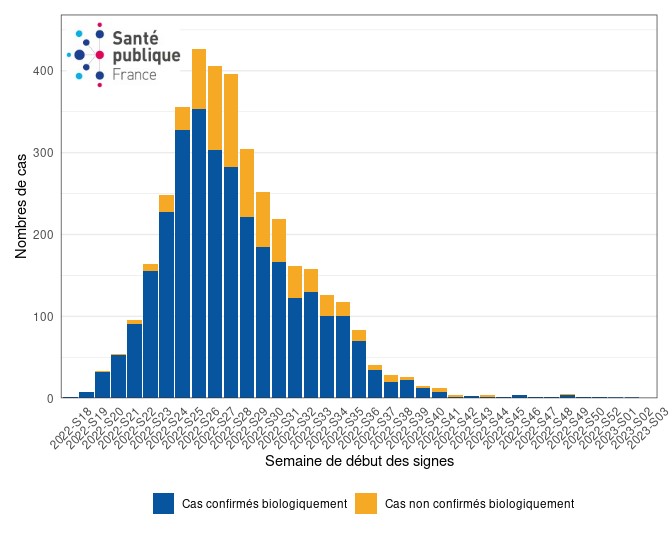
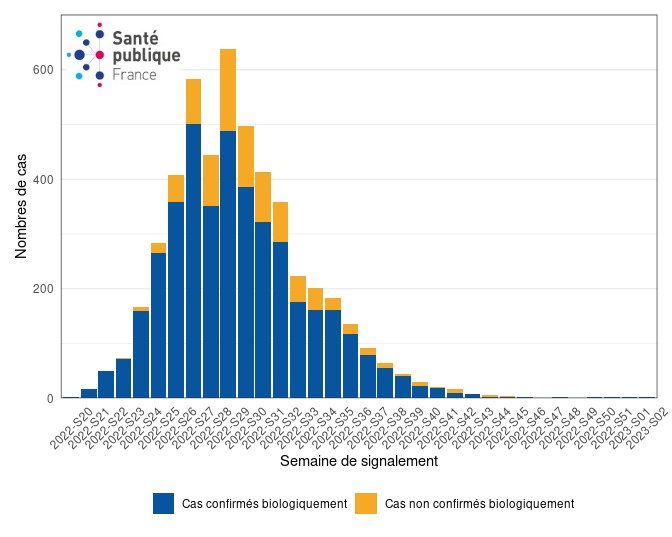
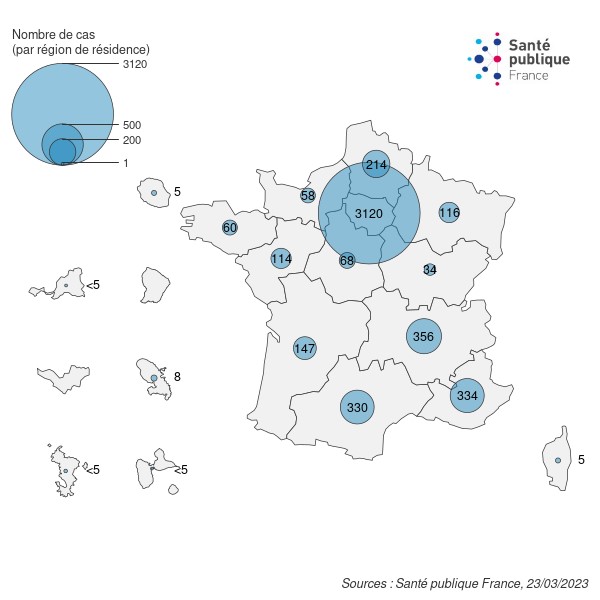
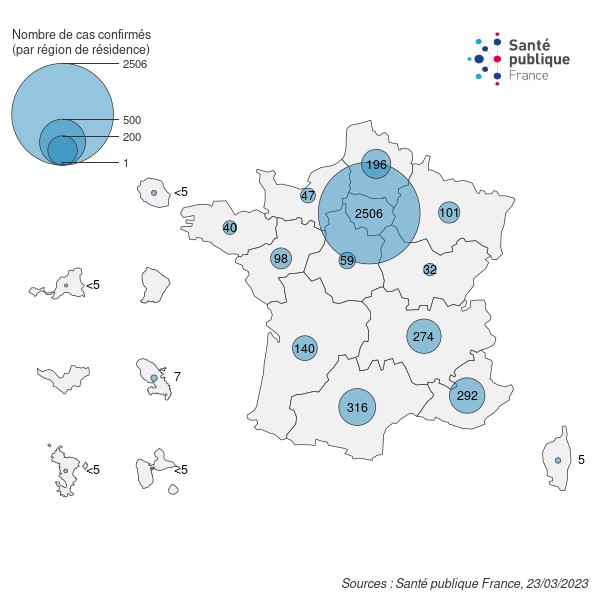
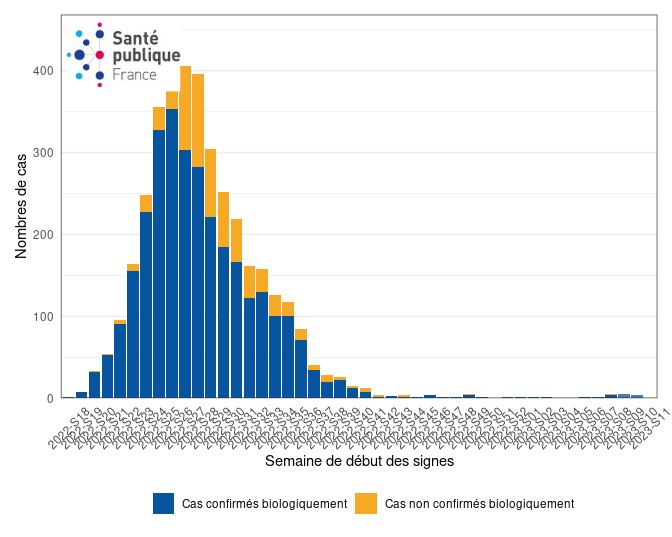
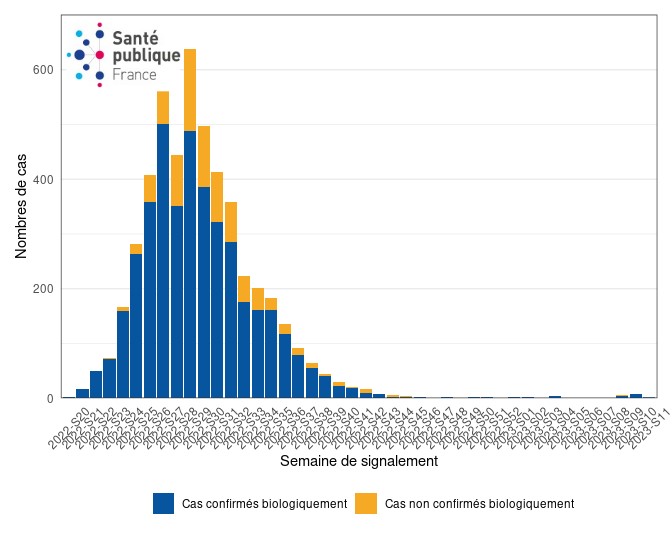
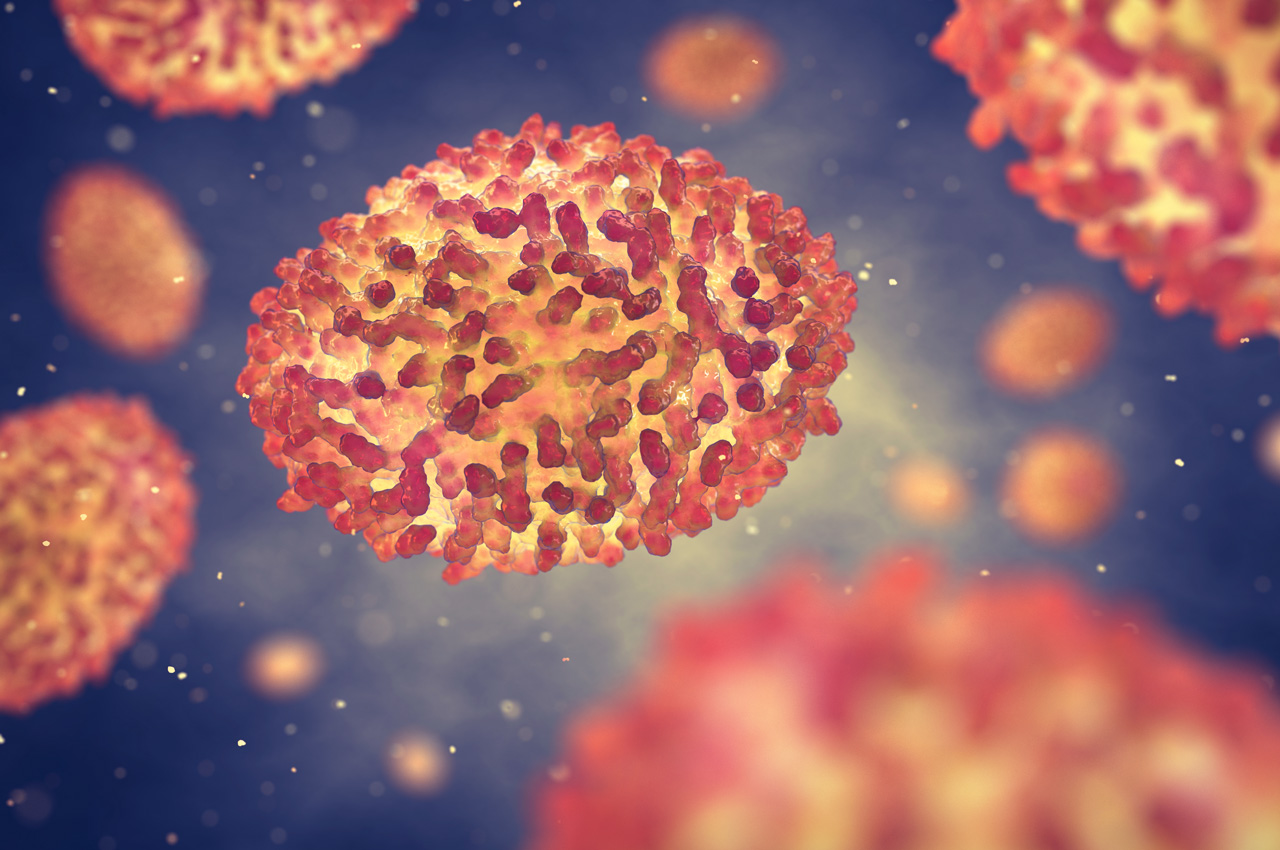

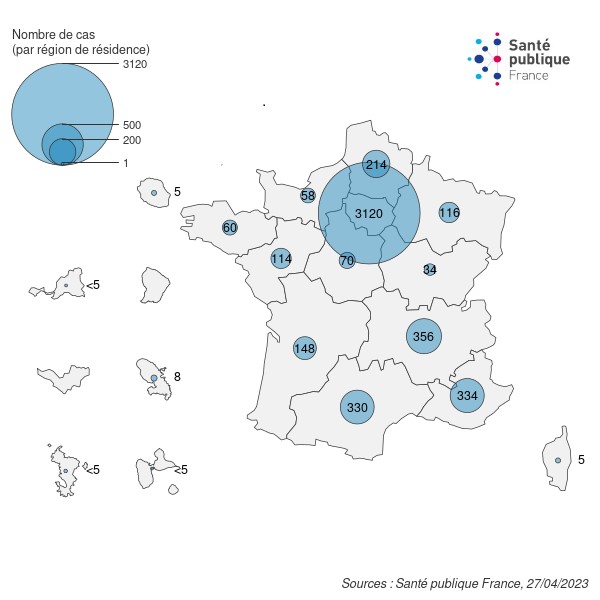
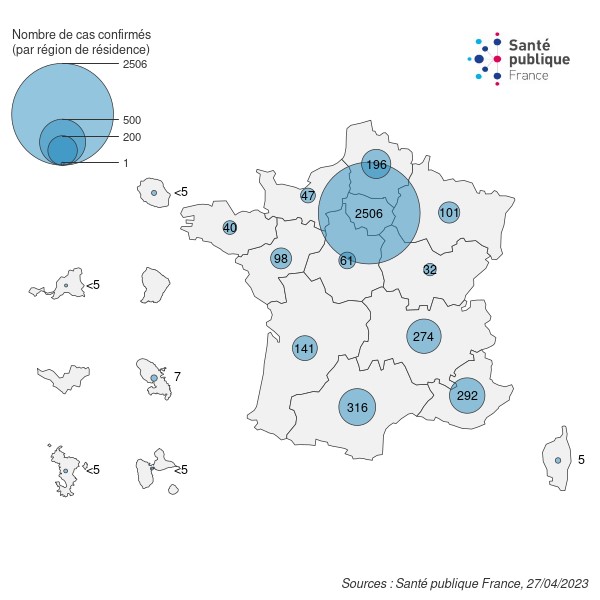
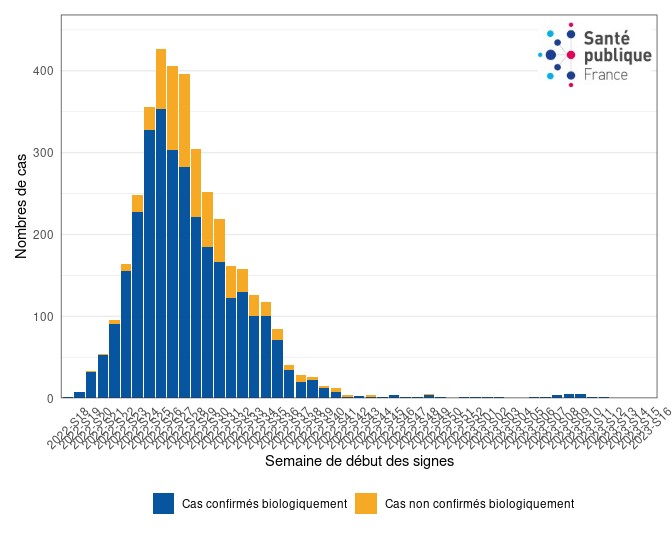
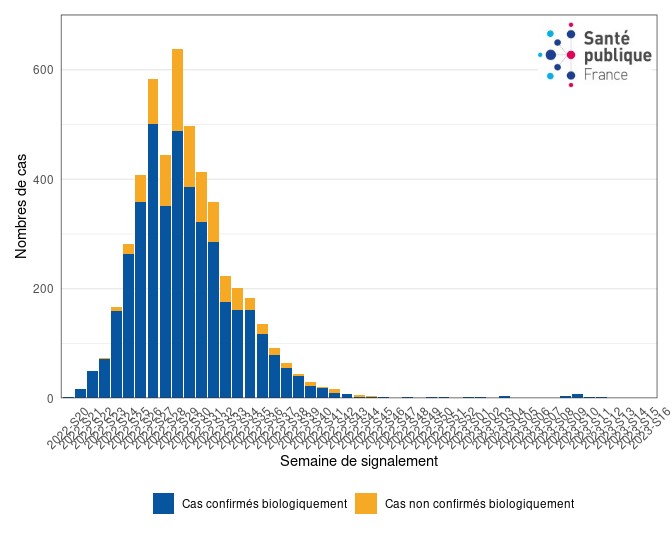
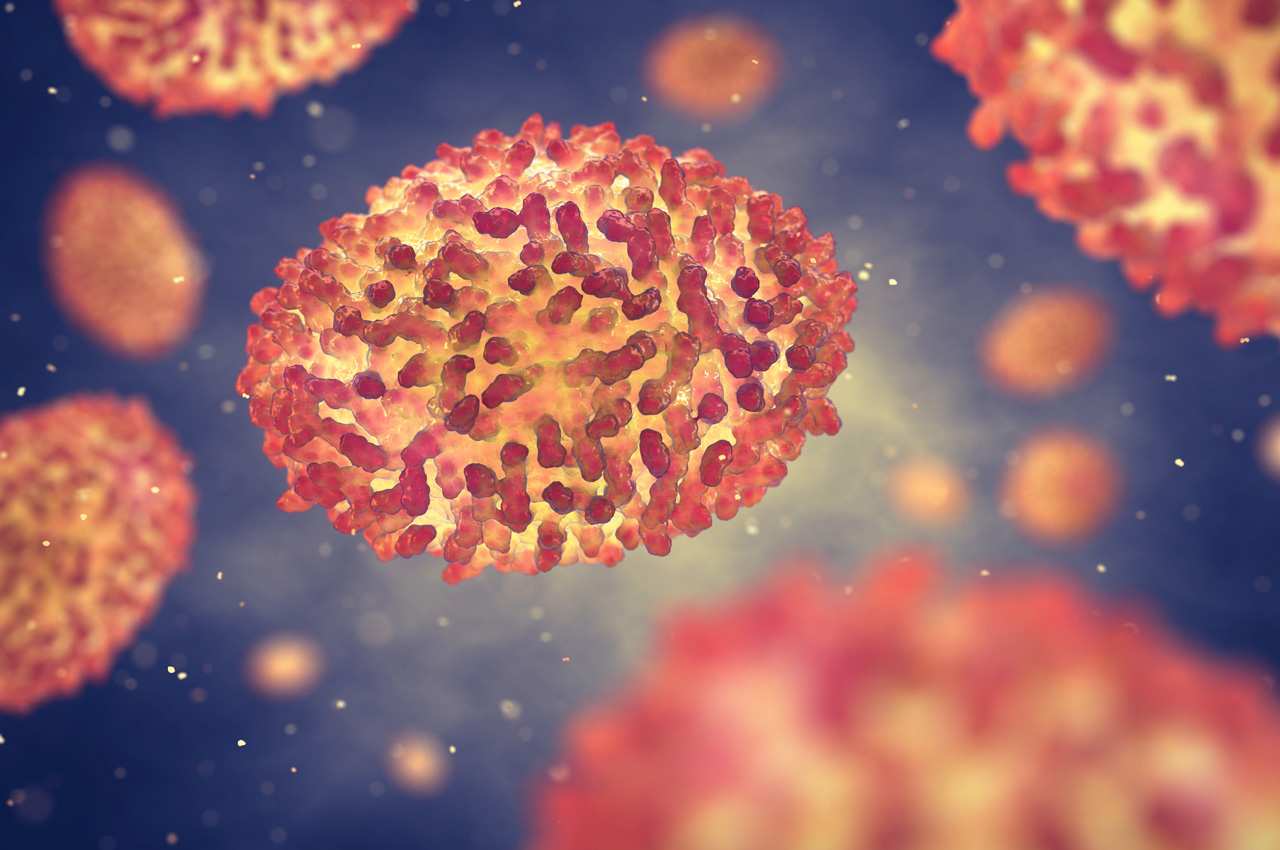

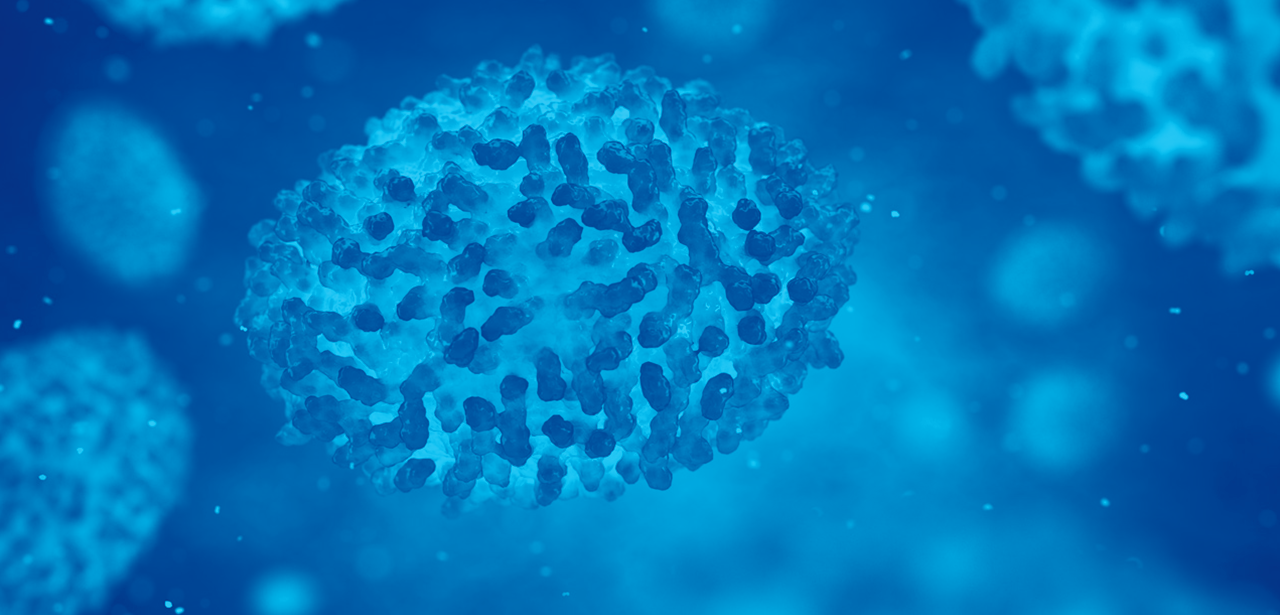
Comment